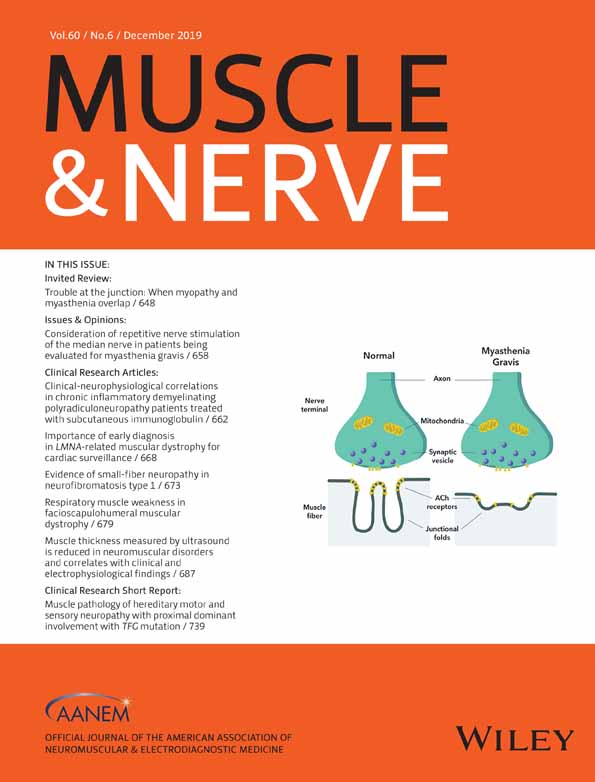Clinical and neurophysiological variability in Andersen-Tawil syndrome
Abstract
Introduction
Andersen-Tawil syndrome (ATS) is characterized by a triad of periodic paralysis, ventricular arrhythmias, and dysmorphism. However, patients often lack one or more of these features.
Methods
Clinical and neurophysiological features were reviewed of five members in two families with heterozygous mutations in KCNJ2 (R218Q and R67W).
Results
Only one patient had all features of the triad of ATS. One patient had low-set ears, and the others had minor anomalies. Bidirectional ventricular tachycardias were seen in two patients. Two patients (R67W) never had episodes of paralysis. The long exercise test was abnormal in three patients with episodes of paralysis, but normal in two without paralytic episodes.
Discussion
ATS patients without skeletal muscle symptoms can have normal neurophysiological examinations. They can show variability in phenotype or the severity of arrhythmias. Such variability among patients who share the same gene mutations may result in underdiagnosis of ATS.
CONFLICT OF INTEREST
The authors report no conflicts of interest relevant to the study reported here.




